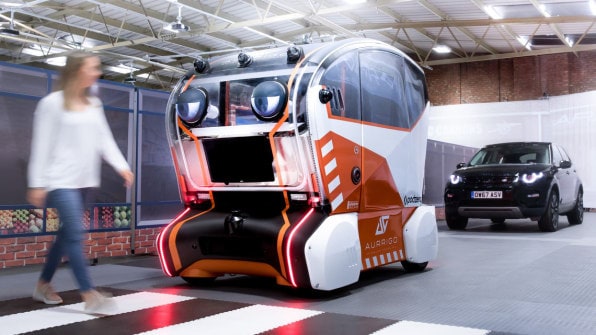
As more and more automotive manufacturers are experimenting with autonomous vehicles, also known as AV’s, the rise in consumer confidence in the ability of these vehicles fails to rise at the same rate. The adoption rate of new technology always experiences a slump towards the beginning, and thus is no different in the acceptance of widespread autonomous vehicle usage. With automotive related incidents being one of the deadliest both in the United States and across seas, automakers hope that AVs can work towards reducing these numbers drastically.
One of the issues Land Rover is tackling is the interaction between pedestrian crossings and autonomous vehicles. In an effort to increase people’s confidence in the ability of AVs to recognize an react to human interferences, Land Rover has designed “virtual eyes” to provide feedback to incoming pedestrians. In order to instill a certain trust factor with AVs, these virtual eyes are calculated to communicate their “vision” so to speak and let incoming pedestrians know that their movements are being tracked effectively in order to avoid collision of any kinds. These autonomous vehicles use a combination of cameras and LiDAR sensors to recognize objects in its path.